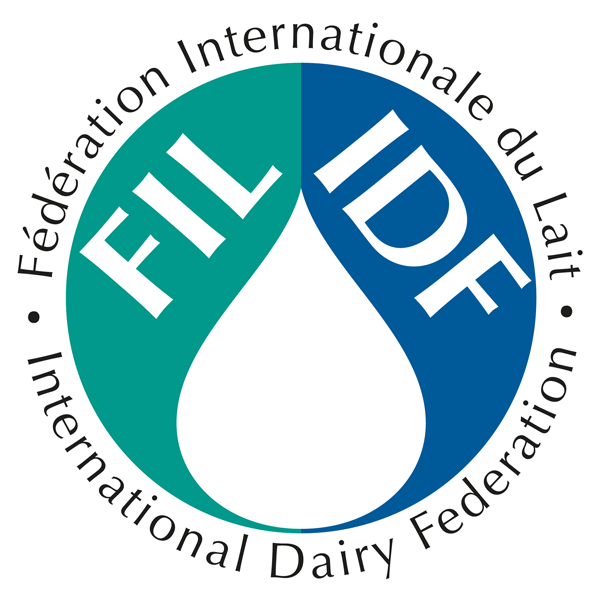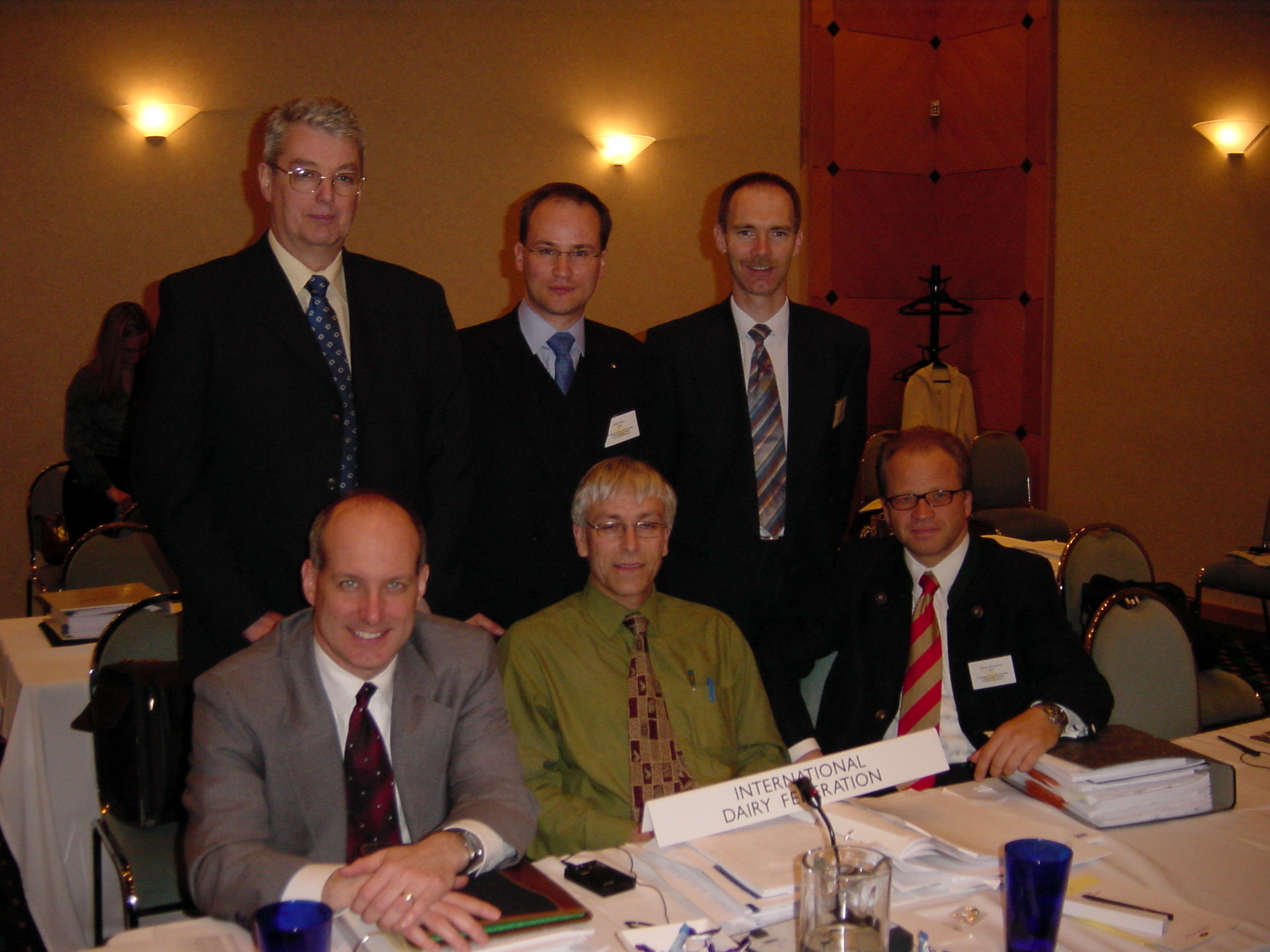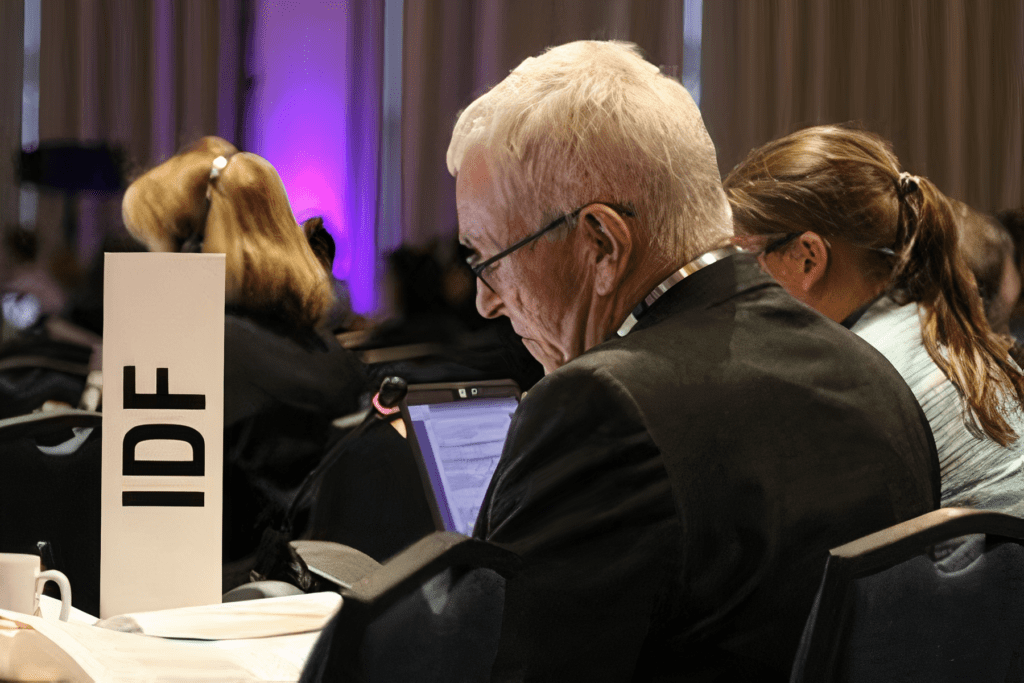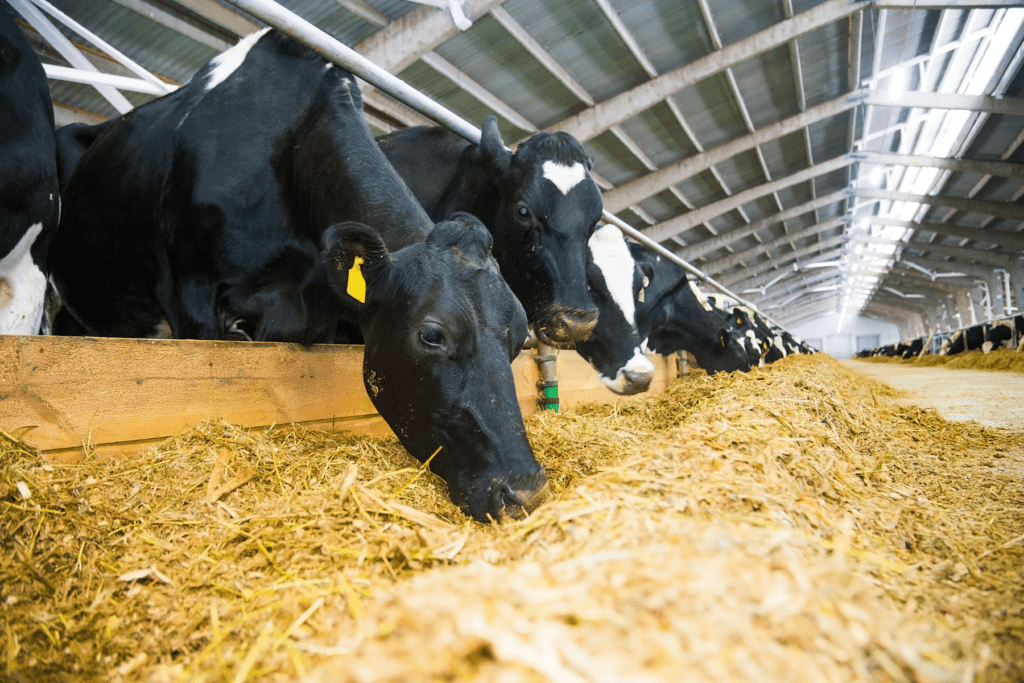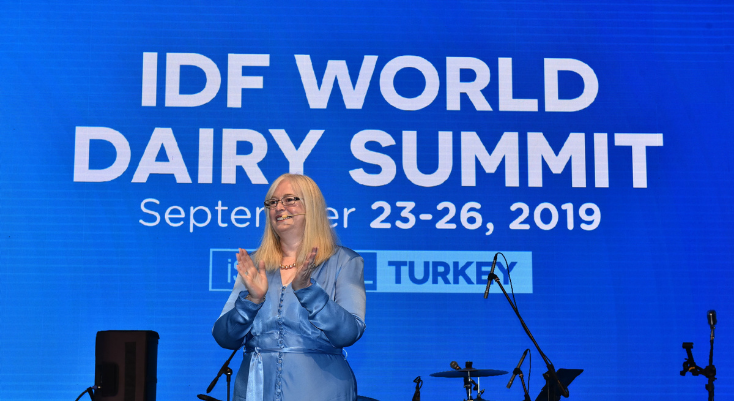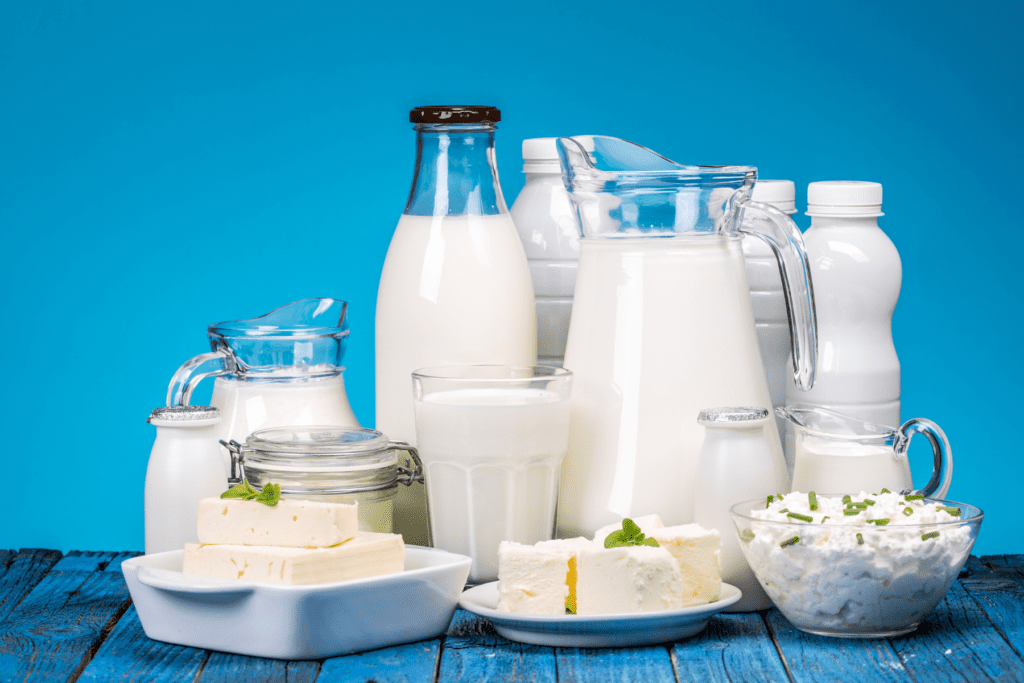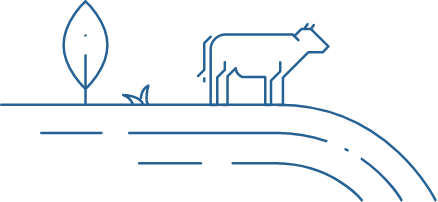The Joint FAO/WHO Committee of Government Experts on the Code of Principles Concerning Milk and Milk Products (1958 – 1990)
In the mid-1950s, IDF developed a Code of Principles Concerning Milk and Milk Products, as well as continuing to develop its own standards and labelling requirements for milk and milk products. Most of this work was done during the IDF Annual Sessions of 1955 and 1956. A draft of the Code was adopted by the International Dairy Congress in 1956. This was taken to the FAO where it was adopted by the 9th Congress of the FAO in Rome in 1957. This FAO Congress also decided to set up the joint FAO/WHO Committee of Government Experts on the Code of Principles concerning Milk and Milk Products (CGECPMMP), referred to as the Milk Committee for simplicity. The first meeting of the new Committee was held in Rome from 8 – 12 September 1958. IDF was represented by its President Prof. Paul Kästli (CH) and 1st Vice-President: Prof. A. M. Guérault (FR). Furthermore, the Committee elected Prof. Rasmus Mork (NO), who had only recently been IDF President from 1950 to 1956, as the Chairman of its 1st Session in 1958 and Prof. Kästli was granted Observer Status on the Committee, its only non-governmental person, with Prof. Guérault given similar status on the Standards Sub-Committee. This was clear recognition of IDF involvement in the establishment of the CGECPMMP and its workings. It should be noted that the setting up of the CGECPMMP predated and had held 6 Sessions before the Codex Alimentarius Commission (CAC) was established and held its first meeting in 1963.
At the first Meeting of the CAC held in Rome from 25 June – 3 July 1963, it was decided to treat the existing joint FAO/WHO CGECPMMP, as a Committee of the Commission itself, having exclusive competence for all questions concerning milk and milk products. Decisions of the CGECPMMP, which was already open to all member countries of FAO and WHO, would therefore be decisions of the CAC in this specified field, subject only to review in Plenary CAC Sessions and relevant Codex Horizontal Committees, if requested. In this way the recommendations of the Joint FAO/WHO Conference on Food Standards in 1962 were given full effect.
The CGECPMMP held 22 Sessions from 1958 to 1990. An IDF delegation participated in all Sessions of the Committee. Great credit is due to this Milk Committee for the work that was done during its 35 years in existence, developing the following:
- The Code of Principles for Milk and Milk Products (later to be revised and updated by the CCMMP to become the Codex General Standard for the Use of Dairy Terms CODEX STAN 206 – 1999)
- 13 General Standards for Milk Products – at that time referred to as A-Standards and numbered A1 – A13. These were Butter, Whey Powders, Butteroil, Evaporated Milkfat, Sweetened Condensed Milk, Milk Powders, Cheese, Processed Cheese, Cream, Cream Powder, Casein and Caseinates.
- 35 individual variety Cheese Standards, at the time referred to C-Standards and numbered C1 – C35. These were, in numerical order, Cheddar, Danablu, Danbo, Edam, Gouda, Havarti, Samsø, Cheshire, Emmenthaler, Gruyere, Tilsiter, Limburger, Saint Paulin, Svecia, Provolone, Cottage Cheese (incl. Creamed Cottage Cheese), Butterkäse, Coulommiers, Gudbrandstalsost, Hartzer käse, Herrgårdsost, Hushallsost, Norvegia, Maribo, Fynbo, Esrom, Romadur, Amsterdam, Leidse, Friese, Cream, Certain Blue-veined Cheeses, Camembert, Brie and Extra Hard Grating Cheese.
IDF had already done work on draft standards of its own in advance of the early Committee meetings, that were discussed and addressed, with a view to get adapting them to meet the requirements and expectation of the members to be suitable for use as internationally acceptable standards.
It became clear that as time went by, many of the standards the Committee had developed had become dated, as advances in technology, especially in the advances towards of automation the processing were not envisaged in the standards. This was especially so in the case of the individual varieties of cheeses, where methods of manufacture were given and it was unsure if processes such as ultrafiltration, which was being used quite widely in manufacture was outside the standard. Other factors such as the growth of demand for reduced or lower fat cheeses was growing at consumer and indeed as regards emerging dietary guidelines. In the latter years of the Milk Committee a review of the existing standards had begun and the need for new standards for products such as whey powders, unripened cheeses, dairy spreads and other milk-based products had been identified.
The transition from the CGECPMMP to the CCMMP (1990 – 1993)
At the CAC meeting in July 1991, many member delegations voiced strong support for the ongoing work of the existing Committee, while the CAC welcomed expressions of interest from several delegations about potentially hosting the Committee in the future. However, some delegations proposed that the Milk Committee should be aligned with the operational framework of other Codex Committees, suggesting a shift in its structure and function. It was believed that some critics of the Milk Committee were concerned with the apparent dominance of IDF in the workings of the Committee. This is a criticism that was raised on other occasions also, but the Codex Procedural Manual of the Codex Alimentarius had and still has the following wording “In the cases of milk and milk products, the secretariat distributes the recommendation of the International Dairy Federation (IDF)”; this is the only role of an NGO (Non-Governmental Organisation) mentioned in the Manual[1]
The 20th Session of CAC in September 1992 agreed to change the status of the FAO/WHO CGECPMMP to that of a Codex Committee on Milk and Milk Products (CCMMP) and designated New Zealand as the Member responsible for appointing the Chairman of the Committee and hosting the CCMMP Secretariat. It also set the date of the first meeting of the CCMMP to be held in Rome from 28 November – 2 December in 1994. Its Terms of Reference were :
“To elaborate international codes and standards for milk and milk products within the framework of the Codex Alimentarius and the Code of Principles concerning Milk and Milk Products”, and in accordance with Statute 1(a) of The Codex Alimentarius Commission “protecting the health of the consumers and ensuring fair practices in the food trade”.
Probably the major motivating factor in the change, regarded by the CAC as a re-naming and re-establishment, was the adoption of Codex standards as scientifically justified norms for the purposes of the Agreement on the Application of Sanitary and Phytosanitary Measures (the SPS Agreement) and the Agreement on Technical Barriers to Trade (the TBT Agreement) in the Uruguay Round of the General Agreement on Tariffs and Trade, that concluded in 1994. It is noteworthy that both the SPS and TBT Agreements acknowledge the importance of harmonizing standards internationally so as to minimize or eliminate the risk of sanitary, phytosanitary and other technical standards becoming barriers to trade.
The work of the CCMMP (1994 – 2010)
The work of the CCMMP therefore was to revise the Codex Standards for milk and milk products, to simplify them and to ensure that they had the necessary sound scientific basis required by the world Trade Organization (WTO). This required close cooperation of all Codex Members and close collaboration with relevant Codex Horizontal Committees. The reference to the Code of Principles held special significance, as the task at hand was to revise and transform the code into the format of a Codex Standard.
It was initially anticipated that the work would be completed within two or three sessions of the Committee. However, it ultimately required nine sessions, held at two-year intervals, as follows:
| Dates | Venue |
CCMMP 1 | 28 November – 02 December 1994 | Rome, Italy |
CCMMP 2 | 27 May – 31 May 1996 | Rome, Italy |
CCMMP 3 | 18 May – 22 May 1998 | Montevideo, Italy |
CCMMP 4 | 28 February – 03 March 2000 | Wellington, New Zealand |
CCMMP 5 | 08 April – 12 April 2002 | Wellington, New Zealand |
CCMMP 6 | 26 April – 30 April 2004 | Auckland, New Zealand |
CCMMP 7 | 27 March – 01 April 2006 | Queenstown, New Zealand |
CCMMP 8 | 04 February – 08 February 2008 | Queenstown, New Zealand |
CCMMP 9 | 01 February – 05 February 2010 | Auckland, New Zealand |
As a technical advisor to the CCMMP, the IDF played a key role in supporting 10 expert groups under Commission D on food legislation matters and an equal number under Commission E, focusing on developing methods of analysis for milk products, including those used in Codex Standards. From 2000 onwards, IDF continued its work through the newly established Standing Committees and their Action Teams, including the Food Standards Steering Group (FSSG) and the Methods and Standards Steering Group (MSSG). These bodies were instrumental in reviewing, responding to, and making recommendations on government comments at Step 3 and Step 5 of the Codex Step Procedure for the elaboration of draft standards. In this work IDF benefitted greatly from having many experts nominated by the National Committees of IDF Member countries, who worked closely with their government delegates who attended the CCMMP Sessions. They were aware of the issues that were posed by the standards and could contribute to achieving consensus positions at the Sessions, rather than tiring to achieve agreement during the sessions themselves.
As with the CGECPMMP, IDF sent delegates to all sessions of the CCMMP. These were generally Chairs of the relevant Expert Groups, or later Standing Committees, or delegates from the relevant Commissions or Steering Groups. The Technical Manager, and/or the Secretary General/Director General from IDF Head Office also attended regularly. In addition, many IDF experts attended sessions as advisors or experts that were part of their government delegations. These also contributed to or worked with their official delegates during the plenary meetings and in-session working groups.
Revised Standards for Edible Casein Products, for Whey Powders, were adopted in 1995. Then, after much hard work by IDF, at the 23rd Session of the CAC held in Rome, from 28 June to 3 July 1999, 9 Codex Standards were adopted. These were the General Standard for the Use of Dairy Terms (GSUDT), which was the revision of the former Code of Principles for Milk and Milk Products and the revised Standards for Butter, Milkfat Products, Evaporated Milks, Sweetened Condensed Milks, Milk Powders and Cream Powder, General Standard for Cheese and the Standard for Whey Cheese and a new Standard for Cheeses in Brine. These replaced the existing standards, which were revoked, and added the new standards to the list.
In the years that followed, a new Group Standard for Unripened Cheese including Fresh Cheese was adopted in 2001. The Standard for Fermented Milks, which was drafted to cover more than just yoghurt and flavoured yoghurt, was adopted in 2003, but was revised in 2010 to encompass Drinks based on Fermented Milks. Standards for a Blend of Evaporated Skimmed Milk and Vegetable Fat, a Blend of Skimmed Milk and Vegetable Fat in Powdered Form, a Blend of Sweetened Condensed Skimmed Milk and Vegetable Fat, and for Dairy Fat Spreads were adopted in 2006.
Over many years work was still being carried out on the remaining standards, especially the more difficult ones. These included the individual cheese standards and the standards for fermented milks. In 1966 IDF proposed a draft decision tree solution to address which of the existing 32 standards should be updated and which could be revoked. This decision tree was based on 3 proposed criteria: (1) How much of that cheese was produced, (2) What volume was traded internationally, and (3) How many countries were involved in international trade (as exporters or importers. This was accepted by CCMMP and of the 32 varieties, 16 were retained, 15 of which were subsequently reviewed and updated, 1 was retained and but not reviewed and updated.
After the 9th session of the CCMMP, with its program of work successfully completed, the Committee was adjourned sine die. It was briefly reactivated to work electronically on the development of a draft standard for Dairy Permeate Powders, with significant contributions from many IDF experts. The resulting Standard for Milk Permeate Products was adopted in 2017, after which the CCMMP was once again adjourned.
Summary and Some Conclusions:
I hope I have successfully outlined the background and basis of IDF’s relationship with Codex, and the CCMMP. This partnership has been, and continues to be, of great importance to us at IDF. It has also strengthened our connections with other Codex Committees, where IDF is now recognized as an authoritative voice for the global dairy sector.
This influence, however, requires a balanced approach. We must avoid being overly aggressive or forceful on issues that present challenges. Instead, our arguments should be grounded in solid scientific evidence to ensure credibility and impact.
Another key priority is the need to continually bring in new experts to our working groups. We are already engaging our third generation of experts working on Codex standards, and soon we will need to begin recruiting a fourth. As a former IDF President once said, “We had better work hard to make IDF successful, because if we did not have it, we would not be able to build it up again.”
[1] FAO and WHO. 2023. Codex Alimentarius Commission Procedural Manual. Twenty-eighth edition, revised; Section 2 p 23. Rome.
